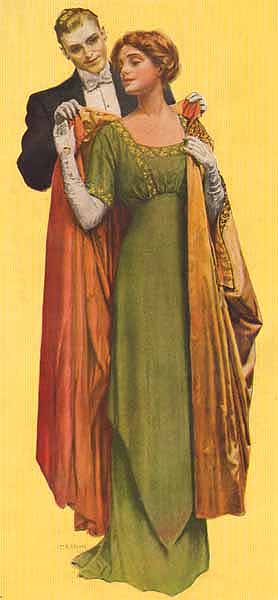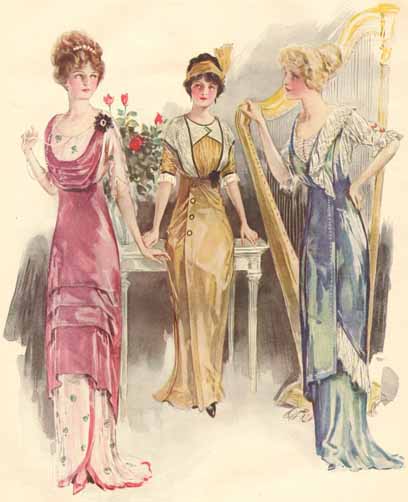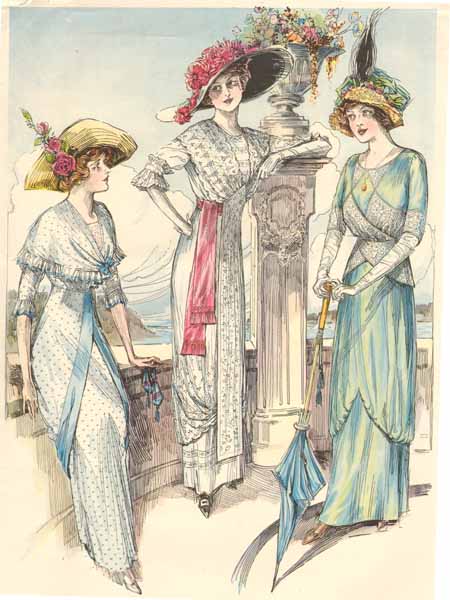Here are some more things that I made to meet this month's challenge
This bead is made from copper that has been hand cut and shaped, a pattern pressed into it and pigmented, torch patinaed. It can be used as a pendant. a link or clasp. I quickly put the copper bail on to show use.
This necklace was cut from a tin, shaped and riveted. I used a silk string from
Lima Beads and I finally dug into a stash of vintage buttons.
February Challenge
I formed and shaped the pendant center from copper and pinned it to a brass plate that I pressed a pattern into. The leaf links I formed and patina was added.
the ribbon is dyed and edge stitched silk. I wanted to keep the feminity of the era of the painting in my piece.
"News of Spring and Other Nature Studies"
By Edward Julius Detmold
Watercolor
Amapolis 1913
Wow what a gorgeous painting and I love watercolor. Watercolor paintings have such a lightness to them but look at the expressive detail. I also love poppies and have been working on getting them back into my gardens for several years. The red ones that bloom in May I adore! I don't have a picture of the one huge coral poppy that I do have so this year I will add the photos of the poppies that I have incorporated into my gardens.
To keep in line with the basic theme of my blog I am adding the history of the era of the Paintings that I am bringing to you.
The Victorian Era
Fashions of the Titanic era
by Catherine Bishop
|
 AN OVERVIEW OF FASHIONS 1910-1912 AN OVERVIEW OF FASHIONS 1910-1912

The period of 1910-1912, called the Titanic Era or Pre-World War I Era, saw the end of the Edwardian Era. By 1910 the silhouette of ladies dresses had simplified and became columnar, with a new, long, corset design which gave the body an upright posture.
 Evening dresses were usually made of fine silks, with open necklines and short sleeves, which could be cut in one with the body of the dress. Fabrics were silk satin, brocade, lace, chiffon and embroidered silks. Many fabrics could be layered to create a rich effect without a lot of bulk. The bodicelining was structured, closely fitted to the figure and boned.
Day dress usually had long sleeves, fairly fitted to the arm. For day wear one-piece dresses in silk or cotton (lingerie dresses with lots of lace trim), blouses and skirts, jackets with matching jumpers or skirts were all popular.
|
|
|
 |
| 1913 ~ 1914 Fashion Catalog |
ART NOUVEAU (all the rage: 1895-1915)
The graceful Art Nouveau period started with designers in France and those in America following suit. The most important characteristic of this kind of jewelry was its free-flowing nature. The whimsical lines found in Art Nouveau jewelry suggest the movement, passion, and youthful vigor in the new ideas of the turn of the century. At the heart of the Art Nouveau movement were nature motifs and fantastical elements such as fairies and wood creatures.

EXHIBIT A: Pieces in the style of Art Nouveau, ranging from $8 to $14
EDWARDIAN (all the rage: 1890-1920)
After the death of the UK’s Queen Victoria, the Edwardian era was ushered in when her son Edward took the throne. This was a lavish period with pearls and diamonds paired with emeralds, rubies and other gemstone accents. This era was proven to be a highly decorative and elaborate period, full of regal and bold components.



















 AN OVERVIEW OF FASHIONS 1910-1912
AN OVERVIEW OF FASHIONS 1910-1912 
 Evening dresses were usually made of fine silks, with open necklines and short sleeves, which could be cut in one with the body of the dress. Fabrics were silk satin, brocade, lace, chiffon and embroidered silks. Many fabrics could be layered to create a rich effect without a lot of bulk. The bodicelining was structured, closely fitted to the figure and boned.
Evening dresses were usually made of fine silks, with open necklines and short sleeves, which could be cut in one with the body of the dress. Fabrics were silk satin, brocade, lace, chiffon and embroidered silks. Many fabrics could be layered to create a rich effect without a lot of bulk. The bodicelining was structured, closely fitted to the figure and boned.









.JPG)




.jpg)

